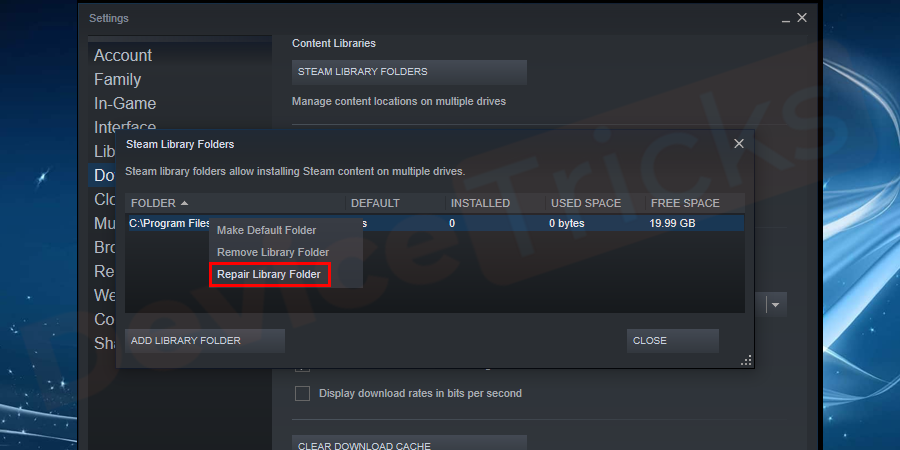
In some cases, if you have the specified directory open in File Explorer, the Delete method may not be able to delete it. If the reparse point is a symbolic link to a file, the reparse point is deleted and not the target of the symbolic link. This method does not recurse through the reparse point. In short: Chkdsk to verify the file system Clean up the servicing store Verify the integrity of the system files Faulting. If the reparse point is a directory, such as a mount point, it is unmounted and the mount point is deleted.

The behavior of this method differs slightly when deleting a directory that contains a reparse point, such as a symbolic link or a mount point. If the recursive parameter is true, the user must have write permission for the current directory as well as for all subdirectories.

If that doesn't work, you will have to copy steamapi64r.dll to your system directory. The path parameter is not case-sensitive. Copy file steamapi64r.dll to the installation directory of the program that is requesting steamapi64r.dll. Trailing spaces are removed from the end of the path parameter before deleting the directory. To obtain the current working directory, see GetCurrentDirectory. Relative path information is interpreted as relative to the current working directory. The path parameter may specify relative or absolute path information.

String subPath = directoryExists = subDirectoryExists = Directory.Exists(subPath) Ĭonsole.WriteLine("top-level directory exists: " + directoryExists) Ĭonsole.WriteLine("sub-directory exists: " + subDirectoryExists) Ĭonsole.WriteLine("The process failed: ", e.Message)
#STEAM API DLL FILE DELETES ITSELF HOW TO#
The following example shows how to create a new directory and subdirectory, and then delete only the subdirectory. The specified path is invalid (for example, it is on an unmapped drive). Path does not exist or could not be found.


 0 kommentar(er)
0 kommentar(er)
